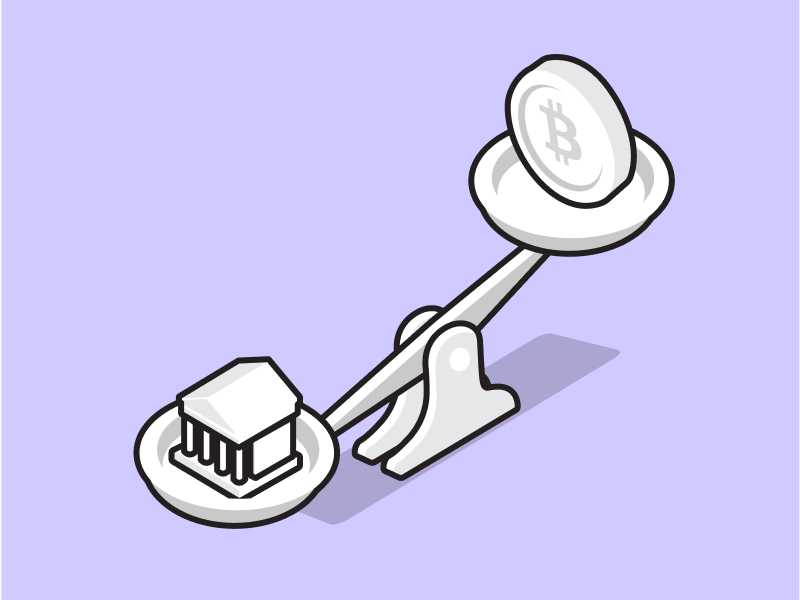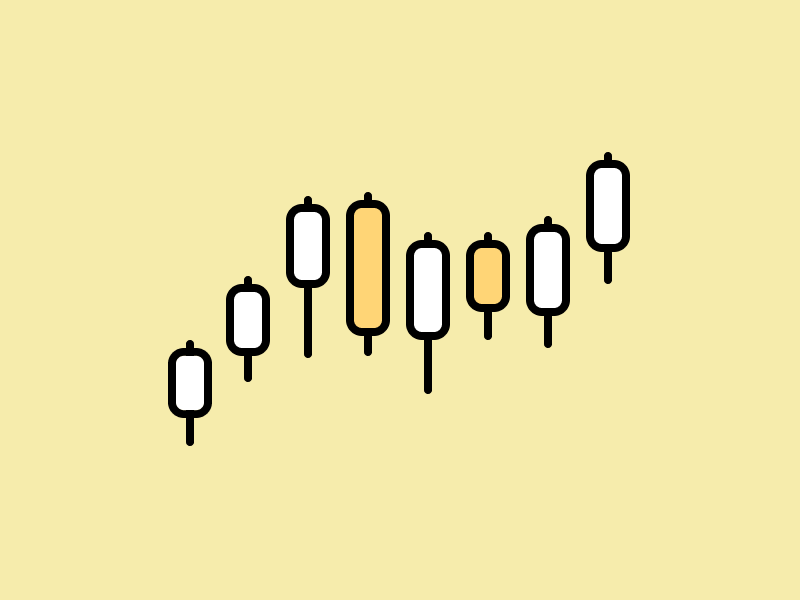Why Does the US Central Bank Policy Affect Cryptocurrency?

Countries have seen growing inflation as a result of a number of global occurrences, including the COVID pandemic and the conflict between Russia and Ukraine. However, in June 2022, the US experienced a 9.1% increase in inflation, which is the highest in the last 40 years.
The unprecedented rise in inflation led the central bank of the United States, Federal Reserve, to take policy by increasing interest rates or the Fed Funds Rate (FFR). This policy has an impact on almost all financial sectors in the world including crypto. Why does the United States’ monetary policy have such a significant impact on crypto markets and the world economy as a whole? We will discuss this further in this article.
Article Summary
- 🌎 The United States is the largest economy in the world with a GDP or Gross Domestic Product reaching 22.9 trillion US dollars in 2021 according to the IMF (International Monetary Fund). With the dominance of the US dollar in the international monetary system, the Federal Reserve’s monetary policy has had a major impact on world financial conditions and economic activity.
- 📈 Inflation in the US increased by a staggering 9.1% in June 2022, which is the highest over the past 40 years. To contain inflation, the Fed started raising interest rates.
- 💸 Lower interest rates mean cheaper loans and more money for people to invest. High interest rates make loans more expensive and investors tend not to use their money to invest but to repay loans.
The Global Role of the US Economy
Before going into the discussion of the impact of the Fed’s policies on crypto, we will briefly discuss how the US economy has a major influence on the world economy as a whole.

Based on the above data, the US is the largest economy in the world with a GDP or Gross Domestic Product reaching US$22.9 trillion in 2021, according to the IMF (International Monetary Fund). In addition, the US accounts for about one-tenth of global trade flows and one-fifth of Foreign Direct Investment (FDI) worldwide.
As the US dollar is the most widely used currency in global trade and financial transactions, changes in US monetary policy and investor sentiment play a major role in driving global financial conditions. Consistent with the dominance of the US dollar in the international monetary system, the Federal Reserve’s monetary policy has a major impact on world financial conditions and economic activity.
💡 For example, the Fed’s monetary policy to contain inflation strengthened the US dollar. The strengthening of the US dollar can trigger inflation in other countries, because commodities such as fuel and metals are mostly traded in US dollars. When the price of fuel and raw materials increases, the price of products and other basic necessities rises too, and creates inflation around the world.
What Causes Inflation?
As mentioned above, the United States recorded a very high increase in inflation, namely 9.1% in June 2022. This figure is the highest in the last 40 years.

Inflation is basically an increase in prices caused by a decrease in the purchasing power of a country’s currency. When inflation occurs, the prices of goods will be more expensive.
So, what actually causes inflation? Here are some of the factors:
- Printing too much money
- The creation of new money from the loan
💡 Quoting the BBC, inflation in the US was driven by the massive $5 trillion spending the US government approved to protect households and businesses from the economic shock caused by the pandemic.
A recent study by the Federal Reserve Bank of San Francisco concluded that pandemic relief packages contributed to a 3 percentage point rise in inflation through the end of 2021 – a factor that explains why US inflation outpaced other countries.
What is the Fed Funds Rate?
Continuing the previous explanation, the record increase in US inflation triggered the Fed’s policy to increase the Fed Funds Rate (FFR). At the end of last July, the Fed decided to raise the interest rate by 75 bps, making it increase to the range of 2.25-2.5%. This increase is another attempt by the Fed to contain inflation without creating a recession.

The Fed Fund Rate is the interest rate that banks charge each other for borrowing or lending excess reserves overnight. Each bank must have a minimum reserve rate commensurate with their deposits. These reserve requirements are kept with the Federal Reserve Bank. When a bank has excess reserves, it can lend these funds overnight to another bank that records a reserve deficit.
The FFR is one of the most important interest rates in the US economy. This is because FFR affects monetary and financial conditions, which in turn have an influence on important aspects of the wider economy including employment, growth, and inflation.
Interest rates also affect short-term interest rates. Everything from home and car loans to credit cards is affected by FFR. This is because lenders often set their interest rates based on the principal loan interest rate. The prime interest rate is the rate that banks charge their most creditworthy borrowers—a rate that is also affected by the FFR.
Therefore, lower FFR rates encourage banks to lend more to consumers and businesses. When the Fed Funds Rate rises, fewer consumers or businesses seek loans, which slows down lending in the open market.
💡 The role of the central bank is to raise and lower interest rates in order to combat inflation and manage economic growth. The central bank can reduce interest rates if economic development slows down, making loans to firms more affordable. As a result, companies can invest and create jobs.
On the one hand, if the economy expands too quickly, there will be a lot of money floating about the market, which may lead to an increase in inflation. Therefore, the central bank can increase interest rates to decrease borrowing in order to slow this inflation rate.
So, How Does the US Central Bank Policy Affect Cryptocurrency?
Just as an increase in interest rates can impact the stock market, an increase in interest rates can also have an impact on the crypto market. When interest rates rise, borrowing money becomes more expensive for both financial institutions, businesses, and individuals. So that when interest rates for credit cards and mortgages also increase, the amount of money consumers can spend also decreases because consumers will focus more on saving money and paying interest.
This has an impact on the crypto market as well. When interest rates are low, individuals and businesses can get loans or have more funds that they can allocate to the crypto market. But when interest rates are high, individuals have less funds to invest with, most of them will also be forced to sell their crypto if they need more funds to repay loans. As more and more people sell their crypto, the crypto market trend will decline.
The drop in the price of BTC by 2% on August 17, 2022, following the release of the minutes from the Fed meeting conducted in July, is one example of how the Fed’s policies directly influences the crypto market. Policymakers stated in the meeting minutes, as reported by CoinDesk, that raising interest rates was still necessary to tame inflation.
In contrast to current market values, which indicated predictions of a rate decrease in 2023, the campaign to maintain interest rate increases and restrictive regulations drove up the price of bitcoin, pushing it to its highest level in the previous two months of around 25,000 US dollars.
The cryptocurrency market saw a significant surge in 2021, which may be attributed to low interest rates and the decision by several nations to print money during COVID-19 in an effort to stimulate the global economy.
But in 2022, the US central bank began increasing interest rates in an effort to stop the massive influx of cash. So, the crypto market cryptocurrencies began to fall. The increased connection between the stock market and the cryptocurrency market has also contributed to this. Many people avoid risky investments like stocks and cryptocurrency when there is concern about slowing economic growth.
References
- Kimberly Amadeo, Current Federal Reserve Interest Rates and Why They Change, The Balance, accessed on August 10, 2022
- Bitcoin Magazine, The Fed Is About To Raise Rates Again, What’s Next For The Bitcoin Price?, Nasdaq, accessed on August 10, 2022
- Michele Ca’ Zorzi, Luca Dedola, Georgios Georgiadis, Marek Jarociński, Livio Stracca and Georg Strasser, Monetary Policy and Its Transmission in a Globalised World, ECB, accessed on August 10, 2022
- Open Market Operations, The Federal Reserve, accessed on August 10, 2022
- Natalie Sherman, Why is inflation in the US so high?, BBC, accessed on August 10, 2022
- Helene Braun, Federal Reserve Hikes US Interest Rate by 0.75 Percentage Point, CoinDesk, accessed on August 19, 2022
- Omkar Godbole, Bitcoin Loses Bullish Trendline as Fed Sees Restrictive Rates Needed for Some Time, CoinDesk, accessed on August 19, 2022
Share


